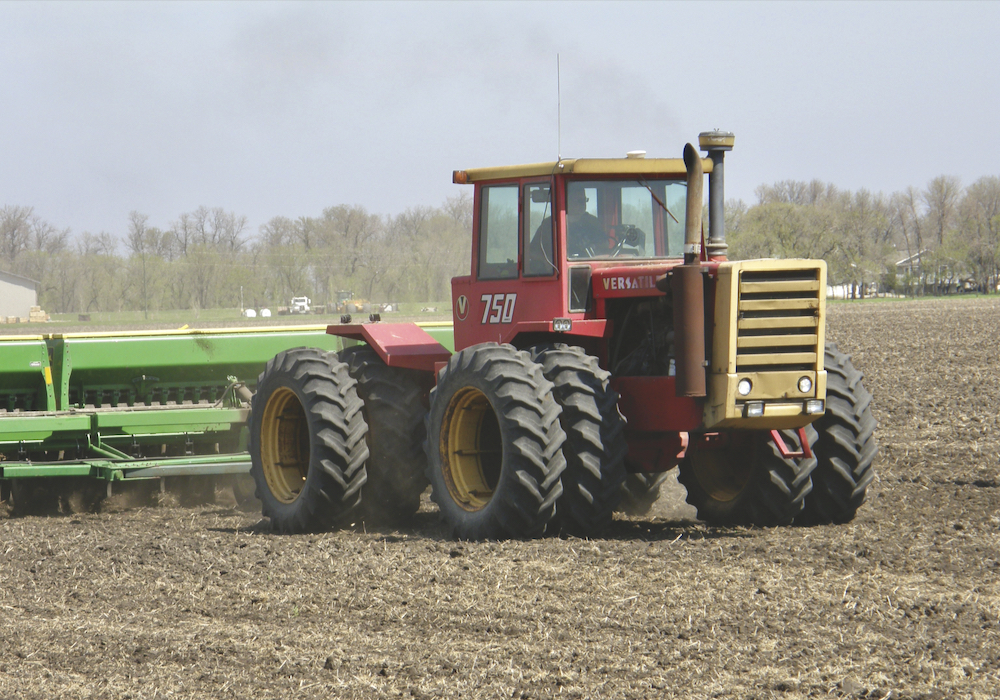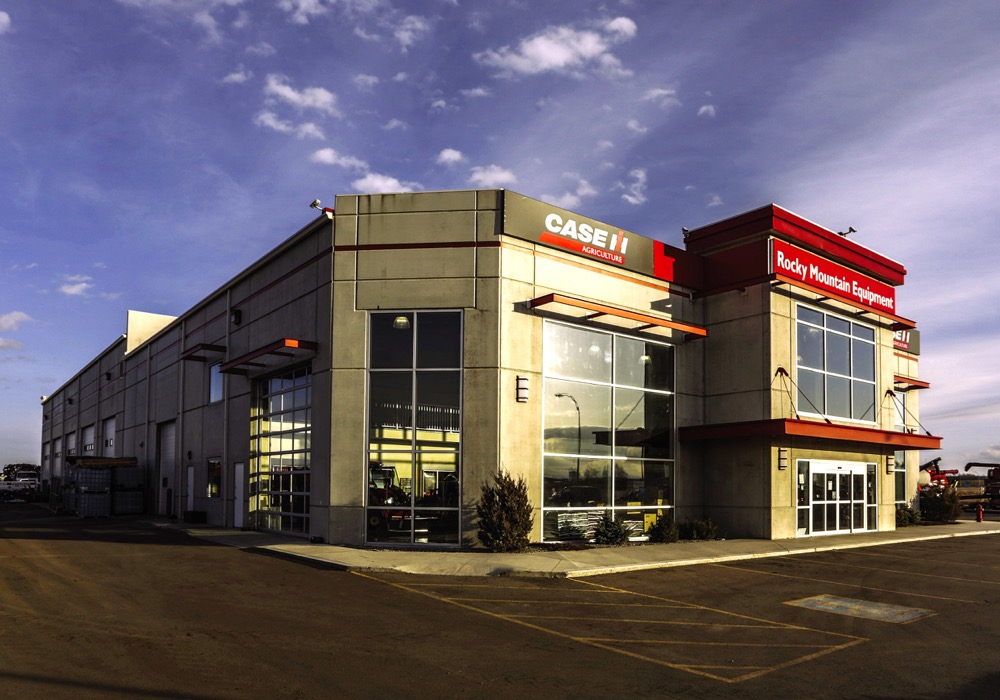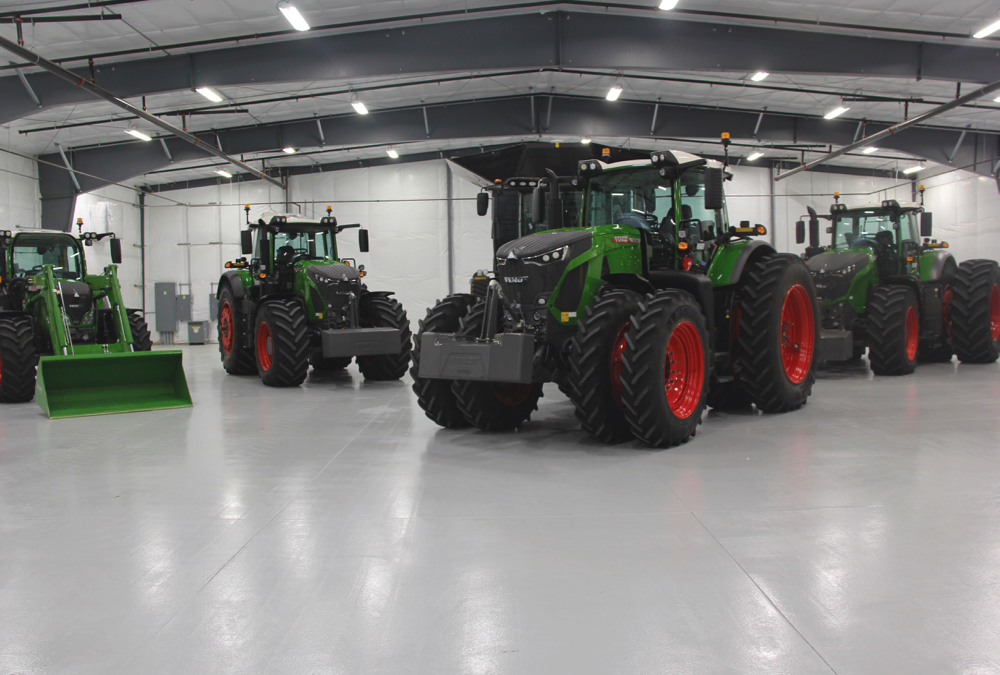Suspicion. Unease. Uncertainty. They were all sweeping across the West a decade ago when farmers began seeing their local Case IH and New Holland dealerships get gobbled up by a new and unfamiliar company.
Then they started hearing the name — Rocky Mountain Equipment — but that didn’t help. Except as the outsiders buying their local dealership, it meant nothing to them.
Today that’s changed, and RME has become, by far, Canada’s largest and arguably most well-known equipment dealership network.
RME has been on the leading edge of a trend that has seen the locally owned, one-store dealership that was common to all brands rapidly give way to multi-store chains all across Canada. Yet now, with over 34 outlets, more than 900 employees, and total assets north of half a billion dollars, RME has taken that concept much further than any other dealer network.
Right from the start, that kind of scale was the objective.
“From a vision perspective, we saw that opportunity,” says Garrett Ganden, RME president and CEO. “It came together faster than we thought, but we did see this as where we wanted to get it to. Our intent was to consolidate the Canadian Prairies, really focusing on Saskatchewan, Alberta, Manitoba. And once we had a real good foothold in that area, look at where it makes sense to expand.”

But when RME kicked off its grand expansion plan, no dealership group had ever targeted anything of that scale. And Ganden remembers some didn’t see the logic in the company’s strategy.
“They didn’t understand what the opportunity was,” he says. “A lot of people didn’t necessarily know how important agriculture was in the western Canadian marketplace, to the communities, to the overall economy itself. A lot of people thought you’re never going to get enough size to be relevant. And we’ve kind of proven that wrong.”
In the beginning the company expected to be able to absorb a few nearby dealerships before too long, but they found more willing sellers than expected. Their timing was perfect.
Read Also

Summer Series: Old machines,new technology
One of my first jobs was working as a mechanic’s helper at a farm equipment dealership in the late 1970s….
“Honestly, the opportunities came faster than we had thought,” Ganden says. “When we first went out in December of ’07, we were able to buy Roydale in Milk River fairly quickly, which allowed us to consolidate that piece of southern Alberta. And really, soon after that it was the expansion to Miller in Manitoba and eastern Saskatchewan. That happened quite a bit sooner than we had envisioned. That turned out to be a blessing to us as an organization.”
But even though growth progressed ahead of schedule, Ganden remembers there were more than a few bumps along the way as RME changed from a privately held company to publicly traded firm and pushed itself to new heights.
“There were lots,” Ganden says. “First of all, we went public in ’07, and in ’08 the financial crisis hit. That in itself was a very trying time. There were lots of learning curves, lots of missteps, but lots of opportunities to take that knowledge and learning and make it better as we moved forward.”
The facts speak for themselves, though: 10 years on, no other dealership network in Canada has come close to matching RME’s scale.
“I think the big difference is Case IH welcomed us to get bigger,” says Jim Wood, who joined RME in 2011 as vice-president of agriculture, and who notes that other brands have different views on what constitutes an ideal dealership size. Without support from the manufacturer, RME would not have been able to get to where it is today.

But RME needed more than encouragement from its supplier. It needed to convince customers to do business with a relative giant headquartered far away when they were used to dealing with a local business. It’s why RME delayed rebranding all its outlets, leaving the original small business names in place for several years until it felt customers were comfortable with the transition.
“We didn’t want to make any big changes,” says Ganden. “Rocky wasn’t known. Rocky was this unknown business buying up businesses that had been there for 60, 80, 90 years. And we wanted to maintain that heritage.”
“We rebranded in 2012-13,” adds Wood. “Every store was running under whatever their name was before. Really, when we rebranded, that’s when we became Rocky Mountain Equipment and tried to work on our synergies and efficiencies as a large organization.”
The rebranding includes eventually creating a standard look for all its stores, although that aspect is taking a little longer than initially expected. Along with a consistent appearance, the company wants to ensure customers also get an overall consistent experience when they walk through the doors.
“We’re trying to invest in the stores so they look professional and have the service capabilities,” says Wood. “We’re also really focusing on the customer experience. Not only is the consistency in our image important, it’s the consistency in the service we deliver. We’re going to continue to focus on that in the next couple of years. That’s going to be our biggest opportunity.”
Opportunity or not, it will be a challenge, because through its strategy of acquisitions RME has amassed a collection of individuals used to working to the beat of their own drum, and it now has to get them to align with a broad company policy and standard customer approach. That’s a problem all expanding corporations face when they take over smaller firms.
“As you do these acquisitions, going through and trying to get everyone to think like part of a larger organization, where we take care of the customer and the community, that is so important to us,” says Ganden. “With every single acquisition, there was a different thought pattern to that at every single store. Trying to get them to think along those lines has been a challenge throughout the time.”
And it will continue to be a focus for management in the years to come, because further growth is still on the radar for RME.
“I think we have lots of room to grow,” says Wood. “The larger you are, you have different challenges. But you also have scale and you have the ability to transfer people and technology around and make investments. Now, going forward, there are fewer acquisitions locally, so we have to think about where do we want to go next, while we focus on improving what we currently have.”
Wood sees further expansion as the company proudly flies the RME banner, because that initial customer uncertainty has faded, and after a decade farmers now know what to expect from the chain.
“Our market acceptance is fantastic,” Wood says. “I think we have a clear direction as to where we want to go. It’s more in the tweaking stage than building from the ground up.”
“Yeah,” agrees Ganden. “It’s just a matter of where is the right spot for us to go. I think it’s important to keep your stores in a tight geographic footprint, because that’s how you’re able to share your inventory and make sure you have the services and the products to support the customers in the areas you’re in. So I think there is going to be opportunity for it, but it’s going to be in a tight geographic area.”
And even with a sluggish machinery market, Ganden doesn’t see a problem financing another growth spurt.
“We’ve spent the last couple of years trying to strengthen our balance sheet to get ready for that next wave of consolidation and expansion,” he says. “The capital is out there.”
In contrast, many dealerships, particularly in the U.S., are just focused on surviving the current sales market. There’s a lot of talk about the need to expand their range of services to remain viable. But even with lower sales volumes here too, RME sees itself as well positioned for the future by sticking to what it’s been doing, and likely with the same product lines it already has.
“We really don’t want to distract ourselves from what we’re really good at,” says Ganden. “We really want to maintain that focus and direction, because that’s how you provide the manufacturers and customers with the support they need, as well as the overall farming community.”
“We’ve had the opportunity (to add new services and products), for sure,” agrees Wood, who then adds. “Case and New Holland build world-class products in all the categories. Why dilute your focus?”
Even if it sticks to its mantra there will still be a need for RME to continually re-examine its ability to deliver the right kinds of service and product support, particularly as technology in farm equipment begins the gradual process of moving toward some level of autonomous machine operation.
“I’m looking forward to it,” says Wood enthusiastically. “We’ve invested a lot in technology and supporting technology, so we’re ready for it.”
















